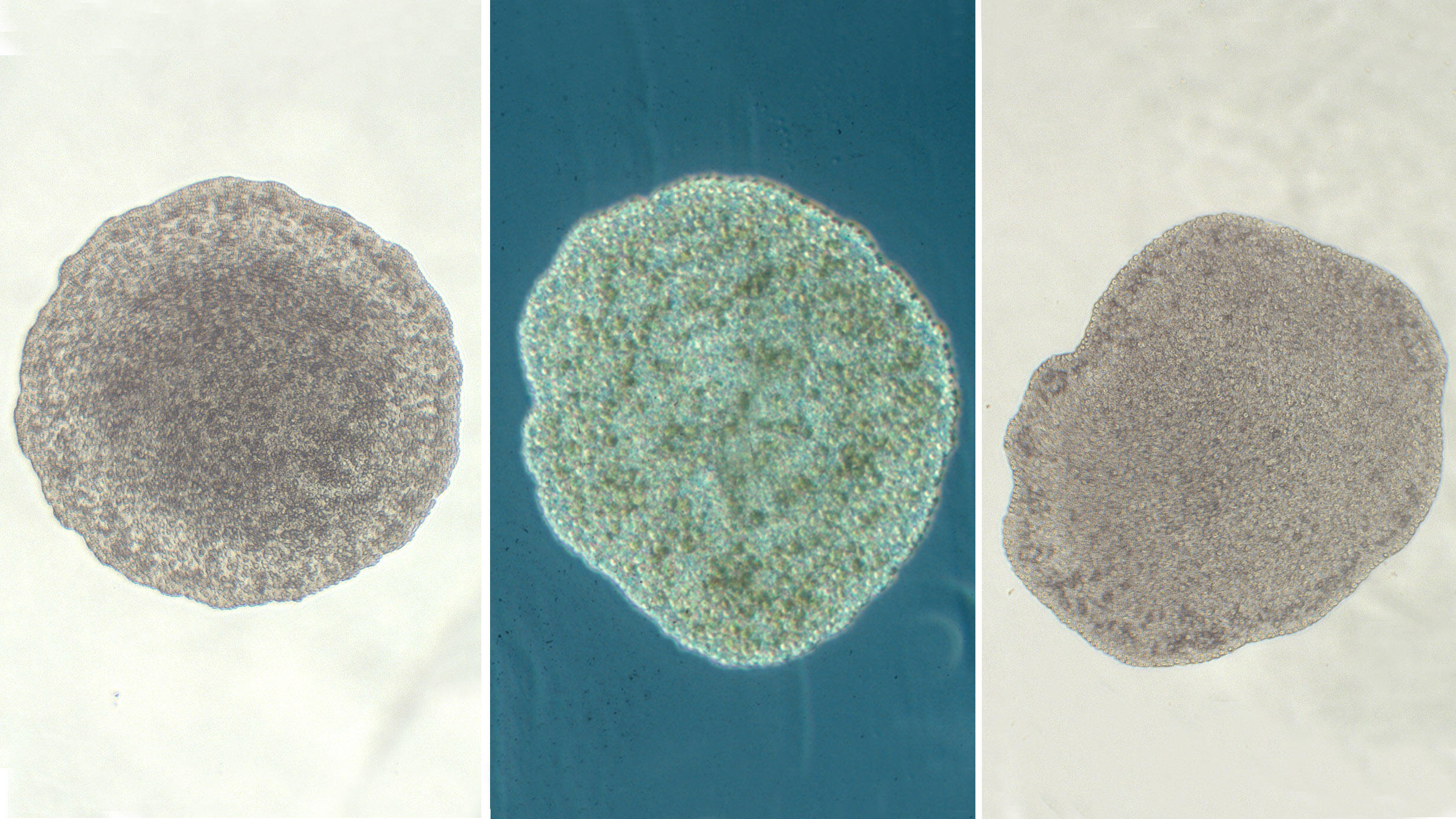 (Left) The placozoan Hoilungia hongkongensis. (Middle) The placozoan Trichoplax adherents. (Right) The placozoan Cladtertia collaboinventa.
(Left) The placozoan Hoilungia hongkongensis. (Middle) The placozoan Trichoplax adherents. (Right) The placozoan Cladtertia collaboinventa.The first placozoan—a tiny organism that looks more like amoeba than the animal it is—was discovered more than 100 years ago. But until now, these unusual life forms, which are the world’s simplest animals, didn’t have a broad-scale Linnaean taxonomy—the standard system scientists use to name plants and animals developed by Carl Linnaeus in the 1700s.
In a new study out this week, a team of scientists from the Museum and elsewhere provide that classification along with a fleshed-out family tree. The research is based on genetic makeup—the presence and absence of genes—rather than outward physical appearance, which is traditionally used to classify organisms.
“Placozoans look like miniscule, shape-shifting disks—basically, they are the pancake of the animal world,” said the study’s co-lead author Michael Tessler, a research associate at the Museum and an assistant professor at St. Francis College. “For a taxonomist looking through a microscope, even a powerful one, there are almost no characters to compare and differentiate them. Yet, despite most of them looking almost exactly the same, we know that on the genetic level, there are very distinct lineages.”Placozoans, most of which are about the size of a grain of sand, have no organs and just a few cell types, with hair-like structures that allow them to move. The first placozoan species was described in 1883, and Placozoa remained a “phylum of one” until DNA-based research in the last 20 years revealed that it contains multiple lineages.
“We wanted to know the relationships within this ancient group of animals and where it sits in the tree of life,” said co-lead author Johannes Neumann, a recent doctoral graduate from the Museum’s Richard Gilder Graduate School. “People have been speculating about that for decades, but now, by looking at differences among placozoans on the molecular level, we’re able to paint a clear picture of how these animals are related to one another.”
The researchers, led by scientists at the Museum, St. Francis College, and the University of Veterinary Medicine Hannover, used a method called molecular morphology—analyzing differences in DNA sequences and other molecular characters—to make classifications. As part of their work, they described two new classes, four orders, three families, one genus, and one species. The work represents the first—and potentially only—time in the 21st century that a Linnaean taxonomy has been constructed for an entire animal phylum.
Their research also suggests that placozoans are most closely related to cnidarians, a group of aquatic animals including jellyfish, corals, and sea anemones, and bilaterians, animals that have a left and right side, like insects and humans.
The authors suggest that this study could serve as a template to revisit systematics of other organisms that look very similar, such as bacteria, fungi, protists, and parasites. Tessler also is the lead author of a second paper that makes the case for molecular morphology in other groups of organisms that have few distinguishable visual features but are genetically diverse.
“Taxonomic blank slates are problematic. Without names, communication is hampered, and other scientific progress is slowed,” said Tessler. “We suggest that the morphology of molecules, such as proteins—which have distinctive structures—should not be considered as anything less than traditional morphology.”